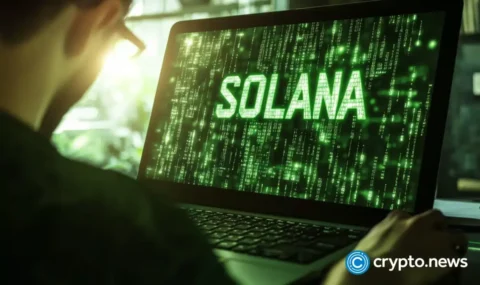
TOKEN2049 scrubbed all references to the A7A5 stablecoin from its website and speaker roster following Reuters’ inquiry. The swift takedown of the platinum sponsor, targeted by U.S. sanctions, revealed the event’s reactive posture to a major compliance scandal.
Summary
- TOKEN2049 dropped sanctioned A7A5 stablecoin from its sponsor list after Reuters inquiries.
- A7A5, tied to Kremlin ally Ilan Shor and Russia’s Promsvyazbank, has $70.8 billion in transactions since launch.
- 41.6B tokens valued at nearly $500 million are in circulation, raising concerns over sanctions evasion and global adoption.
On Oct. 3, Reuters reported that TOKEN2049 organizers, after being contacted for comment, purged all traces of the A7A5 stablecoin, a token sanctioned by the U.S. and U.K. for allegedly helping Russia evade financial penalties.
The removal included deleting A7A5 from its platinum sponsor list and canceling a scheduled stage appearance by its director, Oleg Ogienko, who was present at the Singapore event.
According to the report, Ogienko confirmed to the Reuters team on the sidelines that his operation was the same entity targeted by Western sanctions, stating they had “regularly applied” for and were granted the sponsorship.
Why the A7A5 stablecoin drew Western sanctions
The scrutiny around A7A5 is not incidental. In August, the U.S. and U.K. moved to sanction companies tied to the stablecoin’s launch, alleging that the token formed part of a broader network designed to help Russia skirt financial restrictions imposed after its full-scale invasion of Ukraine. The stablecoin, pegged to the ruble and launched in January, was engineered to create a payments channel outside the reach of Western banks.
According to a detailed analysis by blockchain analytics firm Elliptic, the architect of the A7A5 stablecoin is the A7 group, a Russia-based operation founded by Ilan Shor, a sanctioned Moldovan oligarch and Kremlin ally. The leaks reveal that this is not a rogue startup but a formalized entity partially owned by Russia’s state-owned Promsvyazbank, a bank itself sanctioned for financing Russia’s defense industry.
The token’s scale has quickly grown to match its political baggage. Elliptic reports that there are currently 41.6 billion A7A5 tokens in circulation, valued at nearly half a billion dollars.
More telling, however, is the sheer volume of value it has moved. Since its launch in January, the stablecoin has reportedly handled a staggering $70.8 billion in transactions, a figure that illustrates its rapid adoption as a tool for cross-border settlements.
To build the necessary liquidity for this ecosystem, the architects of A7A5 leveraged the very system they sought to circumvent. Leaked internal chats from April 2025 show A7 employees discussing a concerted market-making campaign, where A7 wallets sent at least $2 billion in USDT to various exchanges to systematically buy up A7A5, creating a deep and liquid market insulated from traditional finance.
Ogienko defends A7A5 stablecoin
On the sidelines of TOKEN2049, A7A5 executive Oleg Ogienko defended the project as a legitimate payments tool. He insisted it had “nothing to do with money laundering” and was compliant under Kyrgyzstan’s regulatory framework.
He described its primary use as facilitating cross-border payments for Russian firms and their trade partners, noting that adoption was strongest in Asia, Africa, and Latin America. In his words, “many of them use our stablecoin… and these are billions of dollars.”



